Serengeti National Park
Serengeti National Park stands as a testament to the raw, untamed beauty of the African wilderness
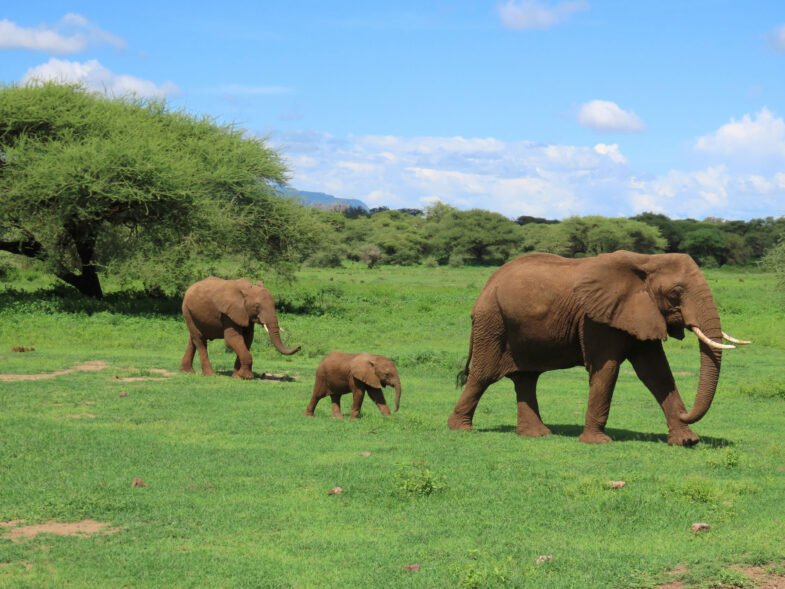
Magic of Serengeti National Park Safaris: Your Ultimate Guide
Nestled in Tanzania's heart lies Serengeti National Park, a testament to Africa's untouched beauty. Known globally for its stunning landscapes, diverse wildlife, and thrilling safaris, Serengeti promises an unforgettable journey for adventurers and nature lovers alike. In this guide, we explore the wonders of Serengeti safaris, uncovering its rich biodiversity, iconic sights, and practical tips for an extraordinary trip
Serengeti National Park Safaris promise an extraordinary journey into the heart of Africa's wilderness, where every moment is filled with wonder and excitement. Whether you're marveling at the sight of a lioness and her cubs, traversing the vast plains at sunrise, or connecting with local cultures, Serengeti offers an immersive experience like no other. Plan your safari adventure wisely, and prepare to be enchanted by the timeless beauty of this iconic destination.
Discover Amazing Wildlife in Serengeti National Park
Serengeti National Park is famous for its thrilling African safari experience, where you can spot the Big Five – lions, elephants, buffaloes, leopards, and rhinoceros. But it's not just about them! The park is also home to many other fascinating animals like cheetahs, giraffes, zebras, wildebeests, hyenas, and lots of birds.
Hop on exciting game drives across the vast savannahs to see lions relaxing under acacia trees, elephants gracefully roaming, and cheetahs quietly hunting. Don't miss the annual Great Migration, when millions of wildebeests and zebras travel through Serengeti, a sight that attracts travelers from all over the world
The Serengeti National Park is a treasure trove of wildlife waiting to be explored. Here, you can witness some of Africa's most iconic animals up close. Let's take a look at some of the highlights:
The Big Five: These are the lion, leopard, elephant, buffalo, and rhino. In the Serengeti, you have a good chance of spotting all of them in their natural habitat. Lions are particularly abundant, sometimes seen in large groups. Leopards are more elusive but may be resting in trees or out hunting at night. Elephants often gather near water sources, while buffaloes roam in massive herds. Rhinos, though rare and endangered, can still be spotted in small numbers.
Lions: The Serengeti boasts Africa's largest population of lions, with over 3,000 individuals. They can be found throughout the park, especially in areas like Seronera Valley and Lobo Hills. Keep an eye out for their hunting and resting activities, particularly during the Great Migration.
Leopards: With over 1,000 leopards, the Serengeti offers a good chance to see these elusive creatures. Look for them near riverine forests like Seronera River, where they might be resting during the day or hunting at night.
Elephants: The park is home to more than 5,000 elephants, living in family groups led by a matriarch.
Cheetahs: Watch these graceful cats in action as they sprint across the open grasslands, reaching speeds of up to 120 km/h. They hunt during the day, preying on animals like gazelles and impalas.
Giraffes: Meet the Masai giraffe, the tallest land animal, munching on leaves from acacia trees with its long tongue.
Zebras: Spot the plains and Grevy’s zebras, social animals often seen mingling with other grazers.
Wildebeest: Witness the famous wildebeest migration, where over 1.5 million of them traverse the Serengeti landscape.
Hyenas: Keep an eye out for spotted and striped hyenas, both scavengers and hunters in their own right.
Antelopes: From Thomson's gazelles to elands, the Serengeti hosts a variety of antelope species, each adapted to its unique habitat and lifestyle.
Where to see Wildlife and Best time for Serengeti Safari
To catch sight of wildlife in the Serengeti, you'll want to know where to look and when to go. Here are the top spots:
Ndutu Area: Found near Lake Ndutu, this place is buzzing during the wet season (December to March) with wildebeest calving. Predators like lions and cheetahs are often seen here.
Seronera Valley: This spot is teeming with animals like lions, elephants, and giraffes. During April-May and November-December, you can witness the migration too.
Northern Serengeti: Though remote, this area offers stunning views and great sightings. From July to October, catch the migration at the Mara River, where lions and leopards watch closely. Other animals like elephants and rhinos can also be spotted here.
Western Corridor: Follow the Grumeti River to Lake Victoria for a chance to see the migration in June-July. Plus, keep an eye out for buffalo, eland, and colobus monkeys.
Safari Activties at Serengeti National Park
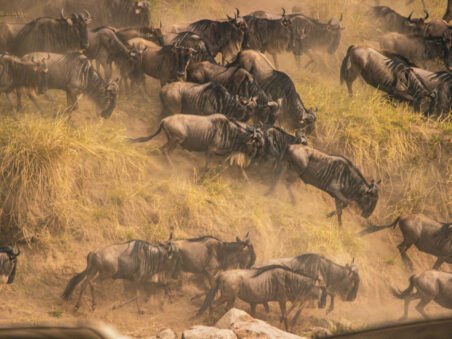
Serengeti Great Migration
The Serengeti Migration, also known as the Great Wildebeest Migration, is one of the most remarkable natural events in the world. It takes place in the Serengeti ecosystem, which spans across northern Tanzania and southwestern Kenya. The migration involves the movement of millions of wildebeest, zebras, and other herbivores in search of fresh grazing and water. The continuous movement of the migration is driven by a seasonal quest for fresh water and pasture influenced by the rains, following a generally clockwise path. The peak of the great migration occurs in the national park from April to June, coinciding with the conclusion of the long rains. Afterward, it heads north towards Kenya’s Maasai Mara Game Reserve, reaching there in August. In September and October, the migration is predominantly centered in Masai Mara.
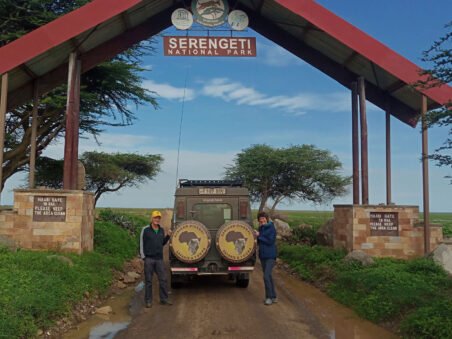
Serengeti Wildlife Drives
- Wildlife drives are the primary activity in Serengeti National Park. Guided by experienced safari operators or self-driven, these drives take you through different sections of the park, allowing you to witness the incredible diversity of wildlife
- Highlights: Spotting the "Big Five" (lion, elephant, buffalo, leopard, and rhinoceros) and other iconic African species in their natural habitat
How can you increase your likelihood of spotting wildlife?
The key factor is the amount of time you spend on safari, which applies to all wildlife sightings in the park. Having a knowledgeable guide, such as those at African Diurnal Safaris, can significantly enhance your experience.
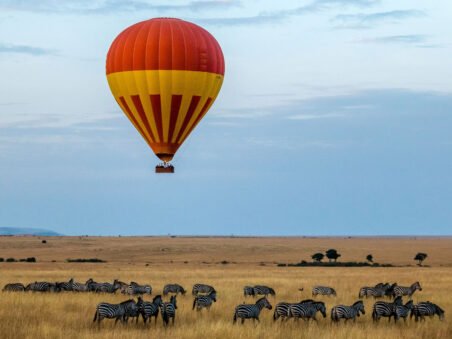
Serengeti Hot Air Balloon Safaris
- Experience the breathtaking beauty of Serengeti National Park from above by taking a hot air balloon safari. This activity provides a unique perspective of the landscape and wildlife.
- Highlights: Panoramic views of the plains, rivers, and wildlife in the early morning light.
Hot air balloon safari adds an unforgettable touch to your Serengeti safari tour, making it even more memorable. Keep in mind, though, that this exclusive and somewhat pricey activity requires advance booking, and its availability is contingent on weather conditions. The cost for a hot air balloon safari typically falls between $450 and $500 per person.
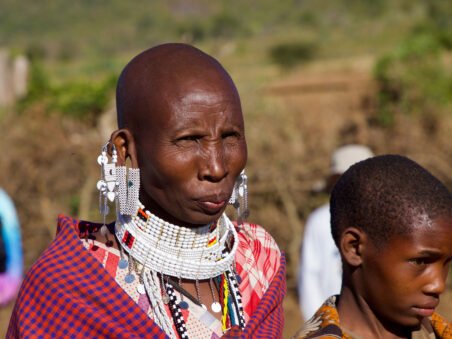
Serengeti Culture Tour/ Masai Village Visits
- Engage in cultural tours to learn about the traditions and lifestyles of the indigenous tribes in the Serengeti region, such as the Masai people.
- Highlights: Visiting local villages, interacting with community members, and experiencing traditional dances and rituals.
Explore the rich culture of the Masai tribe through a village visit, providing a unique opportunity to connect with one of East Africa's most iconic ethnic groups. Delve into their ancient customs and traditions, gaining insight into their enchanting way of life.
During your visit, engage with the locals, absorb their indigenous knowledge, and listen to captivating stories that have been passed down through generations. Immerse yourself in the vibrant Maasai culture as they eagerly showcase their traditional dances, songs, and rituals.
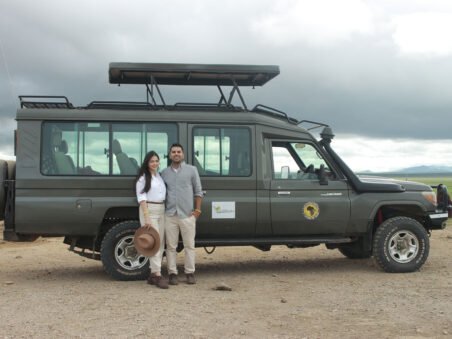
Serengeti Nature walks Safaris
Discover the wonders of the Serengeti national Park in a new and exciting way through
walking safaris. These safaris, designed to explore the diverse fauna and flora of the Serengeti park and are now available as multi-day camping trips
- Some lodges and camps offer guided nature walks in designated areas. These walks provide a closer look at the smaller details of the ecosystem.
- Highlights: Observing flora, insects, and smaller animals with an emphasis on the park's intricate ecological balance.
Serengeti walking safari provides a unique opportunity to delve into the
depth of the landscape. Accompanied by a knowledgeable guide, who is armed for safety, you can immerse yourself in the rich surroundings of the Serengeti and gain a more intimate understanding of its natural beauty.
Plan Your Serengeti Safari
Before you kickstart on your Serengeti safari adventure, it's essential to plan carefully:
Pick the Right Time: Serengeti's wildlife viewing opportunities vary throughout the year. The dry season (from June to October) is ideal for witnessing the Great Migration and spotting predators, while the wet season (from November to May) offers lush landscapes and excellent birdwatching opportunities.
Accommodation Options: Serengeti boasts a range of accommodation options, from luxury lodges and tented camps to budget-friendly campsites. It's essential to book accommodations well in advance, especially during peak seasons, to secure your preferred choice
Getting There: Most visitors fly into regional airports like Kilimanjaro or Julius Nyerere International Airport. From there, you can join guided tours or drive yourself to the park's entrance gates.
Safari Activities: Besides game drives, Serengeti offers bush walks, night drives, and visits to Maasai villages. Mix and match these activities for an unforgettable adventure.
Planning a safari to Serengeti National Park offers various options based on your budget and preferences:
Group Tour: Joining a group tour is a budget-friendly choice where you'll share costs and experiences with fellow travelers. You'll travel in a group vehicle with a guide and stay in arranged accommodations. There are different tour lengths and routes available, some even covering additional destinations in Tanzania or Kenya.
Private Safari: Opting for a private safari offers more freedom and privacy. You'll have your own vehicle and guide, allowing customization of your itinerary and accommodation. Choose from a range of comfort levels, from basic campsites to luxurious lodges, to match your preferences.
Fly-in Safari: For those seeking convenience and avoiding long drives, a fly-in safari is ideal. Fly from Arusha or Kilimanjaro airport directly to one of the park's airstrips. Upon arrival, your lodge or camp will pick you up, and you can immediately start enjoying game drives or other activities. You also have the option to combine different parts of the park or other destinations by flying between them.
When booking your Serengeti safari, it's smart to plan ahead, especially if you're aiming for busy times or popular spots.
Before heading to Serengeti National Park, make sure you've packed all you need for a comfy and safe trip:
Vaccinations and malaria meds: Get the necessary shots and meds, especially for malaria.
Passport and visa: Make sure your passport's valid and get a visa if needed.
Clothes and shoes: Pack light, comfy clothes suited for the weather. Neutral colors are best. Bring sturdy shoes and sandals.
Travel insurance: Have insurance covering medical, evacuation, and other risks.
Camera and binoculars: Don't forget your gear to capture the amazing wildlife. Bring extra batteries and protection for your equipment.
Other essentials: Carry a small backpack with your essentials, a flashlight, water bottle, snacks, toiletries, and entertainment for downtime.
